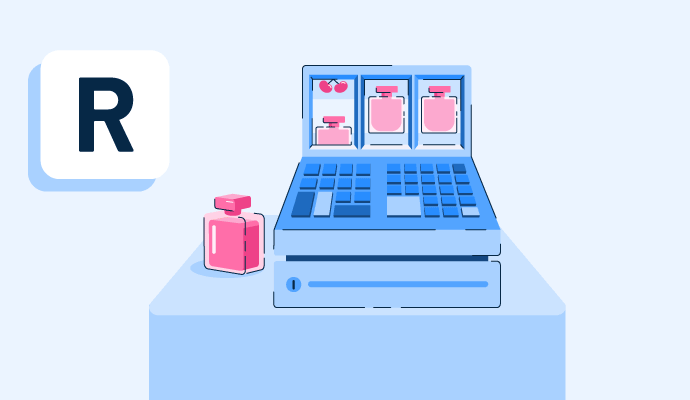What are repeat sales?
Repeat sales refer to purchases made by a customer who has already purchased the same or similar product from the business at least once. Repeat sales come from purchases made by loyal customers.
Businesses rely on repeat sales to increase revenue with significantly lower customer acquisition costs (CAC). The cost of acquiring new customers can be substantial. It involves raising awareness, gaining trust, proving value, and making significant efforts in sales, marketing, and products or services. On the flip side, businesses achieve repeat sales by consistently serving their customer base.
For example, a customer purchases perfume of a brand and likes it. The brand can roll out offers or discounts and easily encourage that customer to buy from them again.
Businesses devote ample resources and efforts to acquiring new customers. However, acquiring repeat customers is easier, makes consistent revenue for a business, and amplifies a brand’s word-of-mouth. Many companies use CRM software to discover repeat sales opportunities and engage customers accordingly.
Types of business that attract repeat sales
Businesses that often get repeat sales from loyal customers include:
- Consumer goods: Customers use these products consistently and quickly (e.g. fast-moving consumer goods (FMCG) products like Nutella or cereals).
- Niche products: Certain companies cater to the needs of a community in a specific niche. For example, a cyclist may buy the same brand of bike every three or four years.
- Subscriptions: These refer to companies that sell subscriptions to people, such as Netflix or HelloFresh.
- Cross-sell: This is when companies offer another product or service range to existing customers. For example, a financing company could cross-sell insurance to a customer who used the financing to purchase a car.
- One-stop shops: These are businesses that sell a large variety of products, like e-commerce stores.
- Marketplaces: These platforms connect a buyer and a seller, as with freelance platforms.
Benefits of repeat sales
Repeat sales have several advantages for businesses compared to new customers. Below are some notable repeat sales benefits.
- Elevated trust: Repeat customers are likely to spend more since they already trust the brand. Customers are aware of the product quality and the service that the company provides. They’re eager to spend more on the same company’s product because it matches their quality and service expectations.
- Easier sales: Businesses can quickly drive repeat sales with highly-targeted marketing. For example, rolling out new discounts for loyal customers. Repeat sales are comparatively easier as sales and marketing teams know the actual demographics of a consumer. The teams can take advantage of this information and make their sales process more effective.
- Effective promotion: Businesses providing a great experience to repeat customers elevate their word-of-mouth marketing and drive more sales.
- Enhanced lifetime value: Repeat customers make frequent purchases with higher order value, increasing their lifetime value (LTV) to a brand.
Best practices to increase repeat sales
Businesses should follow these practices to attract more repeat shoppers and increase repeat sales volume.
- Improve customer service. Delivering remarkable service experiences to customers increases brand loyalty.
- Reduce response time. Providing quick responses to queries or concerns reassures a company’s customer base.
- Create product guides. Creating proper documentation on product installation or usage helps customers self-serve, improving their experience with a brand.
- Simplify the payment process. Providing payment options suitable for customers and taking them through an easy payment process motivates them to make repeat purchases.
- Nurture customer post-checkout. Staying in touch with the customer by communicating new product launches and exclusive offers builds a long-term business relationship with the customer.
- Establish loyalty programs. Connecting customers with a loyalty program offers the right motivation to make repeat purchases.
- Improve products with customer feedback. Improving products or services based on customers’ feedback makes them feel heard and valued, increasing their loyalty toward a brand and attracting more repeat sales.
- Stay active on social media. Responding to mentions and shoutouts on social media keeps a brand in touch with customers daily.
Repeat sales vs. recurring sales
Although repeat and recurring sales are often used interchangeably, the two terms relate to different scenarios. A business gets repeat sales when a customer purchases from them again. However, it’s tricky to say when the customer will make the next purchase. For example, a coffee brand selling its products to customers a third time would be counted in repeat sales.
When customers purchase from a business consistently after a measurable time period, it comes under recurring sales. An example of this is a subscription-based business, like CRM software, where customers renew their subscriptions monthly, quarterly, or yearly. Besides the tech industry, wellness products like multivitamins and supplements tend to show recurring sales.
Repeat sales are usually generated through upselling and cross-selling. Learn more about the difference between the two.

Sagar Joshi
Sagar Joshi is a former content marketing specialist at G2 in India. He is an engineer with a keen interest in data analytics and cybersecurity. He writes about topics related to them. You can find him reading books, learning a new language, or playing pool in his free time.














